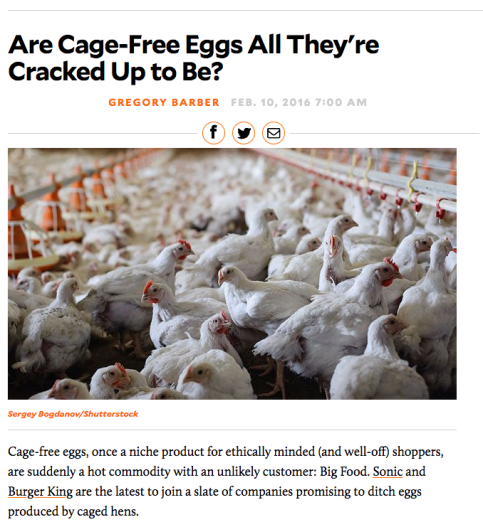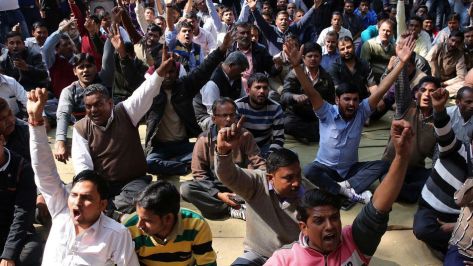In my previous blog post , I introduced food futurology, future food trends and some pop. culture representations of food futurology. This blog post will show how my ideas have developed and detail my research – exploring the accuracy of these pop. culture representations, and what they reveal.

Food is of the upmost importance to human survival, thus explaining our fixation and obsession with it and every single process involved in bringing it to our mouths. Food is often seen as a reflection of our quality of life ….
“Malnutrition in all its forms is closely linked, either directly or indirectly, to major causes of death and disability worldwide. The causes of malnutrition are directly related to inadequate dietary intake”… “which is responsible for perpetuating a generational cycle of poverty” (UNICEF 2006 & WHO 2013).
In this way it is easy to see why we have many fears for the future of food industry.
The tensions and fears about the future of the food industry are played out within popular culture. The common themes emerging within pop. culture representations of food are:
- Genetic modification
- Ownership/domination of multi-national corporations
- Over-consumption
- Standardisation
- Mass-production
- Loss of ‘art’ and culture
- Decay of environment/poor living conditions
- No freedom
- Robot superiority
- Enhanced human experience
But how accurate are these representations?
It is difficult to predict what the future of food innovation may include, but using the development of innovations within the past century alone, we can evaluate the accuracy of pop. culture representations.
Genetic modification
Currently, genetically modified foods are developed – and marketed – because there is some perceived advantage either to the producer or consumer of these foods. The genetically modified food crops currently on the market are mainly aimed at an increased level of crop protection through the introduction of resistance against plant diseases caused by insects or viruses or through increased tolerance towards herbicides (WHO 2014).
In this way, we can see that genetic modification of food production is already quite commonplace, and popular culture representations are an exaggerated version of the processes already in place. (See Willy Wonka and the Chocolate Factory below).
Ownership/domination of multi-national corporations
Monsanto (among a handful of large corporations) have begun to take control of the world’s food supply by ensuring that farmers sign agreements ensuring they will have to buy new seed every year from Monsanto (see article).
“Monsanto already dominates America’s food chain with its genetically modified seeds. Now it has targeted milk production. Just as frightening as the corporation’s tactics–ruthless legal battles against small farmers–is its decades-long history of toxic contamination.” (Barely & Steele 2008)
In this way the ownership and ‘domination’ of the food industry represented within popular culture is based on some truth. ( See Demolition Man below)
Over-consumption
Obesity has become a “severe public health crisis. Experts agree that as more and more obese children become obese adults, the diseases associated with obesity, such as heart disease, cancer, and especially diabetes will surge. That will mean a lot of sick people” (Griffin 2016). This epidemic is due to over-consumption and lack of exercise and affects a large percentage of people all over the world (Heart Org. 2016).
In this way the popular culture representations are a dystopic projection of our future, based on current health projections. (see Wall-E below).
Mass-production
The American food industry is largely defined by mass production (as is many other Western country’s) (see article) and has been since the turn of the 20th century.
“Consistency has become a hallmark of fast food – in each chain, restaurants look alike and meals taste the same… no matter which restaurant you visit. The food itself is mass produced in a factory and then frozen…. the factory adds artificial and natural flavors to the food to make sure it all tastes the same. The employees in different restaurants follow the same instructions for cooking, dressing and packaging the food.” (Wilson 2015)
Food production has moved to using more industrialized methods of mass production in order to radically transform the entire chain of production (Contois 2016). We’ve seen many new innovations to mass-produce food, including an automated device makes 400 gourmet burgers from scratch every hour and requires no human interaction (see here).
These methods of mass production are not dissimilar to those depicted within popular culture representations. (See Cloud Atlas below)
Decay of environment/poor living conditions
The current food industry and methods of production do have a large impact on the environment (see Kroyer’s article) as represented within popular culture. Representations like Soylent Green and Blade Runner do have some basis on our current food industry. But with food futurology and food innovations, we can see this problem be reduced, and eventually ‘solved’. Innovations like vertical farming and Hydroponic, Aquaponic and Aeroponic farms can help to prevent further damage to our environment and help support our growing population sustainably. As Iseman (2014) said, “it feels in many ways like we’re just beginning to learn how best to grow food”.
In this way the popular culture representations are a dystopic projection of our future, in a future without new food innovation and technology introduced to solve these problems. (See Soylent Green and Blade Runner).
No freedom
Our individual food choices are actually the result of the social and economic environment of which we live. The average person within the ‘First World’ has become almost totally disconnected from their food supply.
“Our industrial food economy is led by an increasingly small group of transnational food conglomerates and buffeted by corporate-influenced government policies… Because of their enormous financial and political resources, corporations and the government agencies that regulate them have an enormous influence over our food choices and the information we receive about them” (Simon, 2011).
“There is no absolute right to consume… any particular food.” the U.S. Food and Drug Administration (FDA) (Libertas Institute 2011)
In this way, the lack of freedom depicted within popular culture representations is based on our current society. (See Mad Max below, and again Soylent Green)
Enhanced human experience
We have already seen many innovations to enhance the human experience with food, for example the use of genetics to design diets to fit individuals’ nutrigenetic profile (see here). We have also seen Shepherd apply his Neurogastronomy research to trends in nutrition, dieting, and obesity, especially the challenges that many face in eating healthily. He has analysed the human perception of smell and flavor and their relationship to the neural basis of consciousness. Neurogastronomy will eventually lead to food advancements that can appeal to individual emotion, food preferences, and cravings.
In this way, food innovations can in fact enhance the human experience. This is somewhat reflective of the representations within popular culture. (see The Hitchhiker’s Guide to the Galaxy and Star Trek below)
What do these representations reveal?
Popular culture is a space in which to share the ideas of everyday people, and an analysis of the representations within popular culture can reveal deep-seated anxieties and fears common to many individuals. These representations symbolise our anxieties about:
the environmental effects of our current food industry (represented within the pop. culture visions of dystopia, decay and degradation), loss of individual control and freedom of food choices (represented within the pop. culture visions of evil mega-corporations, autonomous manufacturing and mass production), the loss of all that is ‘natural’ within the food industry (represented within the pop. culture visions of genetic modification and involving machine-oriented, automated processes), overconsumption and consumerism (represented within the pop. culture characterisations of greed, obesity and over-indulgence), the unknown (represented within the pop. culture reflections on virtualisation and genetic modification), and an ultimate fear of the human condition (represented within the pop. culture depictions of robots and alien species).
Are these anxieties justified?
After researching the accuracy of popular culture representations and what they reveal, I began to think about whether these anxieties surrounding food futurology are justified- and decided it would be interesting to explore this aspect within the scope of my report, and alongside the themes outlined within this post.
References:
Barlett, D & Steele, J 2008, ‘Monsanto’s Harvest Of Fear’, The Hive, <http://www.vanityfair.com/news/2008/05/monsanto200805>.
Contois, E 2016, ‘Timeline of the Modern American Food System’, Food Systems History, <https://foodsystemhistory.wordpress.com/timeline/>.
Iseman, L 2014, ‘Space-Age Gardening: Aquaponics, Hydroponics, and Aeroponics’, MakeZine, <http://makezine.com/2014/05/02/space-age-gardening-aquaponics-hydroponics-and-aeroponics/>.
Simon, M 2011, ‘Food Politics’, Eat Drink Politics, <http://www.eatdrinkpolitics.com/about/resources/food-politics/>.
UNICEF 2006, ‘Progress for Children: A Report Card on Nutrition’, UNICEF, vol. 4, <https://www.unicef.org/nutrition/index_33685.html>.
WHO 2013, ‘Essential Nutrition Actions: Improving maternal, newborn, infant and young child health and nutrition’, World Health Organisation,<http://www.who.int/nutrition/publications/infantfeeding/essential_nutrition_actions/en/>.
WHO 2014, ‘Frequently asked questions on genetically modified foods’, World Health Organisation, <http://www.who.int/foodsafety/areas_work/food-technology/faq-genetically-modified-food/en/>.
Image: http://www.TimTim.com


























